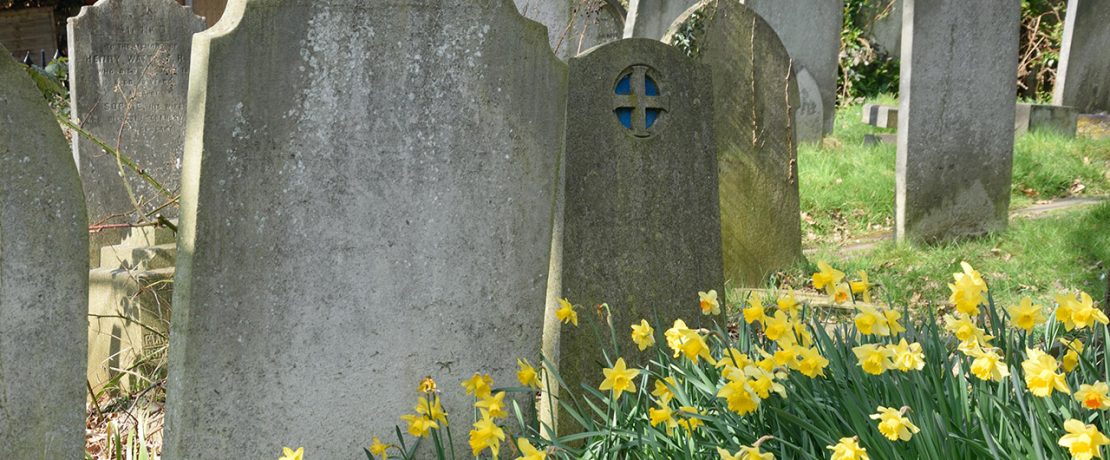The old, green graveyard
Writer and visual artist Josie George has dealt with disabling chronic illness since childhood.
Here, she highlights the importance of accessible greenery, describing a precious place close to home.
I’m trying to remember the last time I went to the old, green graveyard. If I could rise out of my bed and hover above the roof of my squashed terrace, I could see it: two main roads, two pedestrian crossings, and there it is.
It’s been a few weeks since I managed to get myself onto my mobility scooter and make the trip, but that is not unusual, even before the pandemic. I am only 39, but my body can’t be upright for long – a consequence of a broken autonomic nervous system.
Big gulps of sky
The graveyard is the only green space I can get to independently. It holds all the trees I know: a veritable arboretum. Wild cherry and hawthorn, yews and holly, grand pines and firs and larch, oak, beech, sycamore, field maple, all in their right and proper places, telling a story of what is old and wild, what is new and managed. It stretches, long and quiet, away from the road.
A long, high fence marks one shortest edge and its outer edge ends at the big, reeded pond. A kissing gate there leads to marshland, to rough paths alongside beautiful waterways, lakes and bird hides, inaccessible and so forbidden to me, but more alluring to everyone else. And so mostly my graveyard is a passing-through place, not a place you stop in – ironic, given its residents.
During the first lockdown, signs were tacked to the trees, reminding us to keep our distance, and I looked at the orderly, obediently spaced rows of graves and smiled. I am safe and in good company here.
It is a generous place. The paths are wide and there are benches to sit on. ‘Rest a while’ the plaque on one invites. The pine trees drop their cones and pigeons drop their soft, grey feathers. The evergreens provide shelter in the rain and a green view all year round.

Sometimes all I’ll manage is 10 minutes there, to take in big gulps of the sky as a reminder that there is more to life than my house, but sometimes I’ll be able to stay a while longer. I’ll take a blanket and lie down on the grass. I’ll challenge myself to bring back a treasure: a leaf, a feather, a sliver of bark; and then I’ll go home and back to bed, holding it in my hand.
Locked out
One day I went, and the gate in was locked. It stayed that way for weeks until the council could arrange for maintenance. It didn’t stop the walkers – they could still gain access up the scrubby bank by the pond – it only stopped me. It felt personal. It was personal.
I wanted to shout at the gate-lockers that they didn’t understand. You see, when I’m there, I can watch kestrels, frozen in the air. Buzzards call in sharp, wide circles, like a finger drawn round and round on your palm. From the grass, I can hear the geese in the marshland.
Occasionally I will see the grey, hunched sentinel of the little old man heron at the edge of the lake; the bend of a white swan. Squirrels run and chase and make me laugh. It may not seem like a lot, but it is everything to me.
I want to tell the world that the one thing we need from green spaces is a promise that they’ll be waiting for us, when we’re ready, when we’re able. We need the gate held open.
A Still Life: A Memoir (Bloomsbury, £16.99) is Josie’s first book, documenting her quiet days and appreciation of the simple joys of nature, from neighbourhood birds in flight to light reflecting off frozen puddles. Find more of her writing and art at josiegeorge.co.uk
A version of this article was originally published in CPRE’s award-winning magazine, Countryside Voices. You’ll have Countryside Voices sent to your door three times a year, as well as access to other benefits including discounts on attraction visits and countryside kit from major high street stores when you join as a CPRE member. Join us now.






